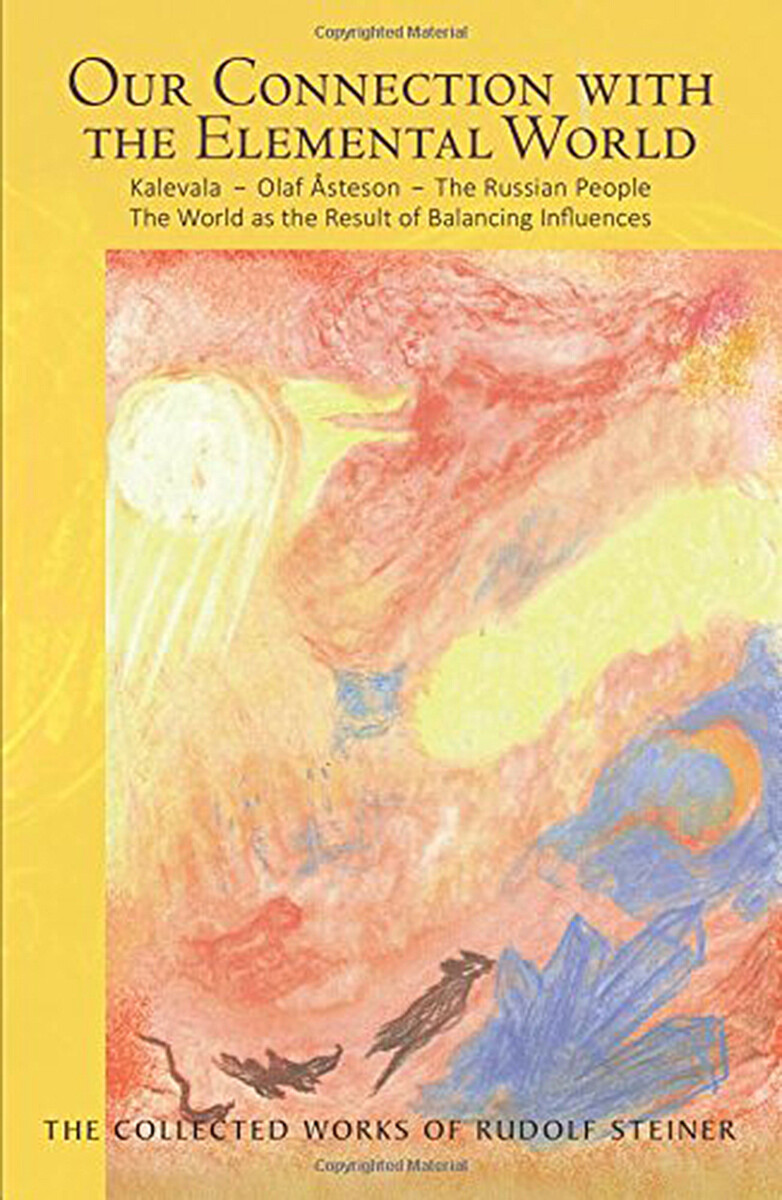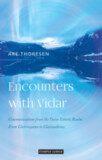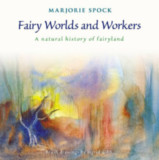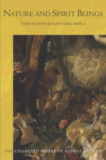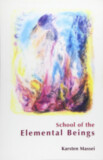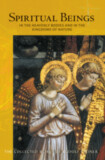Our Connection with the Elemental World
Kalevala – Olaf Åsteson – the Russian People: The World as the Result of Balancing Influences (CW 158)
- Publisher
Rudolf Steiner Press - Published
20th January 2017 - ISBN 9781855844889
- Pages 288 pp.
- Size 6" x 9"
7 lectures, 6 addresses; various cities, Jan. 1, 1912 – Dec. 31, 1914 (CW 158)
The heart of this volume comprises Rudolf Steiner’s commentary on the elemental forces responsible for our earthly nature as human beings—forces that influence us through our membership of a national or geographical group. When such elemental forces are not recognized and understood, he states, they cause conflict and chaos. However, Steiner indicates an important accompanying task that calls on all of us to develop individuality, emancipating ourselves from the earthly influences underlying national and racial groups.
These great themes are framed by Rudolf Steiner’s pioneering research into the two major Northern folk poems—Kalevala and The Dream Song of Olaf Åsteson. The former tells of the elemental spirits who created the conditions for our earthly incarnation, whereas the Dream Song has to do with the drama of excarnation—the journey of the human soul after death. Linking these vast motifs is Steiner’s unique description of the mission and tasks of the Russian people and the contrast of their destiny to the North American people (who, he says, are "dominating the Earth for a brief period of increasing splendor").
Steiner explains how elemental beings, responsible for the balance of land and sea, have created conditions whereby various peoples are enabled to develop their gifts and fulfill their destinies. Thus, he speaks of Finland as the ancient conscience of Europe, Russia as the future bearer of the Christ-imbued Spirit Self, and the differing but complementary environments of Germany and Britain. Strikingly, he states, "No souls on Earth love one another more than those living in Central Europe and those living in the British Isles."
Steiner also speaks of the necessary work of the luciferic and ahrimanic beings that collaborate to enable the solid spatial forms of our physical bodies. Likewise, they influence our etheric and astral bodies, facilitating thinking, feeling, and volition to be imbued with life and consciousness.
This book is a translation from German of Der Zusammenhang des Menschen mit der elementarischen Welt. Kalewala – Olaf Åsteson – Das russische Volkstum – Die Welt als Ergebnis von Gleichgewichtswirkungen (GA 158).
C O N T E N T S:
Editor’s Preface
Introduction by Simon Blaxland-de Lange
Public Lecture: “The Essential Nature of National Epics, with Particular Reference to the Kalevala”
1. Man’s Connection with the Elemental World, Finland, and the Kalevala, I
2. Man’s Connection with the Elemental World, Finland, and the Kalevala, II
3. Man’s Connection with the Elemental World, Finland, and the Kalevala, III
4. Fundamental Experiences of the Fourth and Fifth Post-Atlantean Epochs
5. Battles Waged by Lucifer and Ahriman in the Human Organism
6. The World as the Result of Balancing Influences
Various Addresses and Q&A Sessions
NotesRudolf Steiner
Rudolf Steiner (b. Rudolf Joseph Lorenz Steiner, 1861–1925) was born in the small village of Kraljevec, Austro-Hungarian Empire (now in Croatia), where he grew up. As a young man, he lived in Weimar and Berlin, where he became a well-published scientific, literary, and philosophical scholar, known especially for his work with Goethe’s scientific writings. Steiner termed his spiritual philosophy anthroposophy, meaning “wisdom of the human being.” As an exceptionally developed seer, he based his work on direct knowledge and perception of spiritual dimensions. He initiated a modern, universal “spiritual science” that is accessible to anyone willing to exercise clear and unbiased thinking. From his spiritual investigations, Steiner provided suggestions for the renewal of numerous activities, including education (general and for special needs), agriculture, medicine, economics, architecture, science, philosophy, Christianity, and the arts. There are currently thousands of schools, clinics, farms, and initiatives in other fields that involve practical work based on the principles Steiner developed. His many published works feature his research into the spiritual nature of human beings, the evolution of the world and humanity, and methods for personal development. He wrote some thirty books and delivered more than six thousand lectures throughout much of Europe. In 1924, Steiner founded the General Anthroposophical Society, which today has branches around the world.


